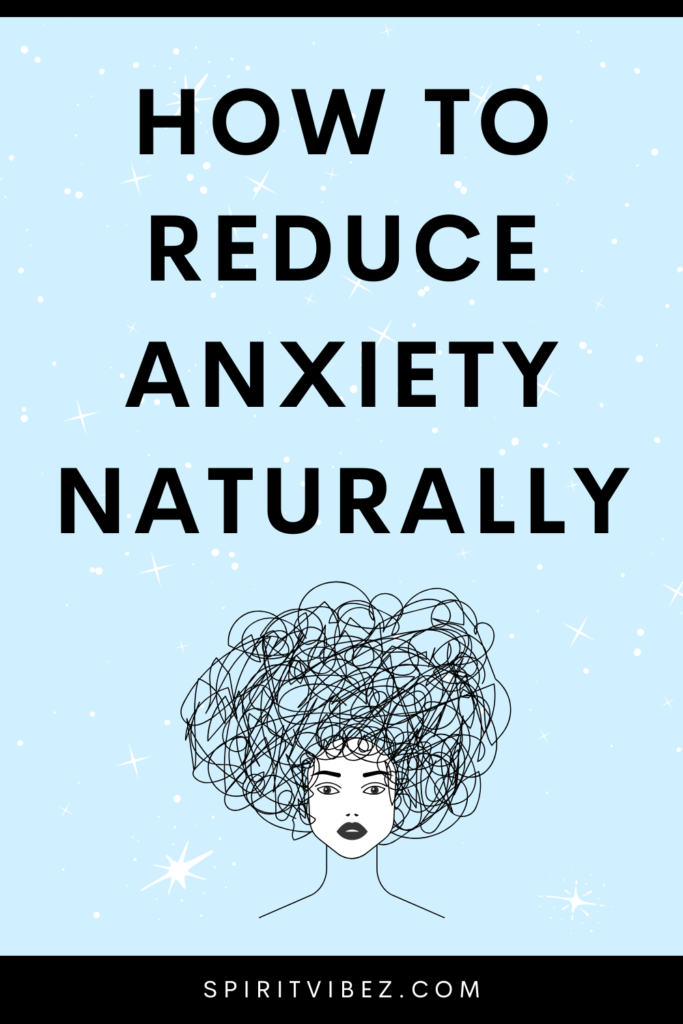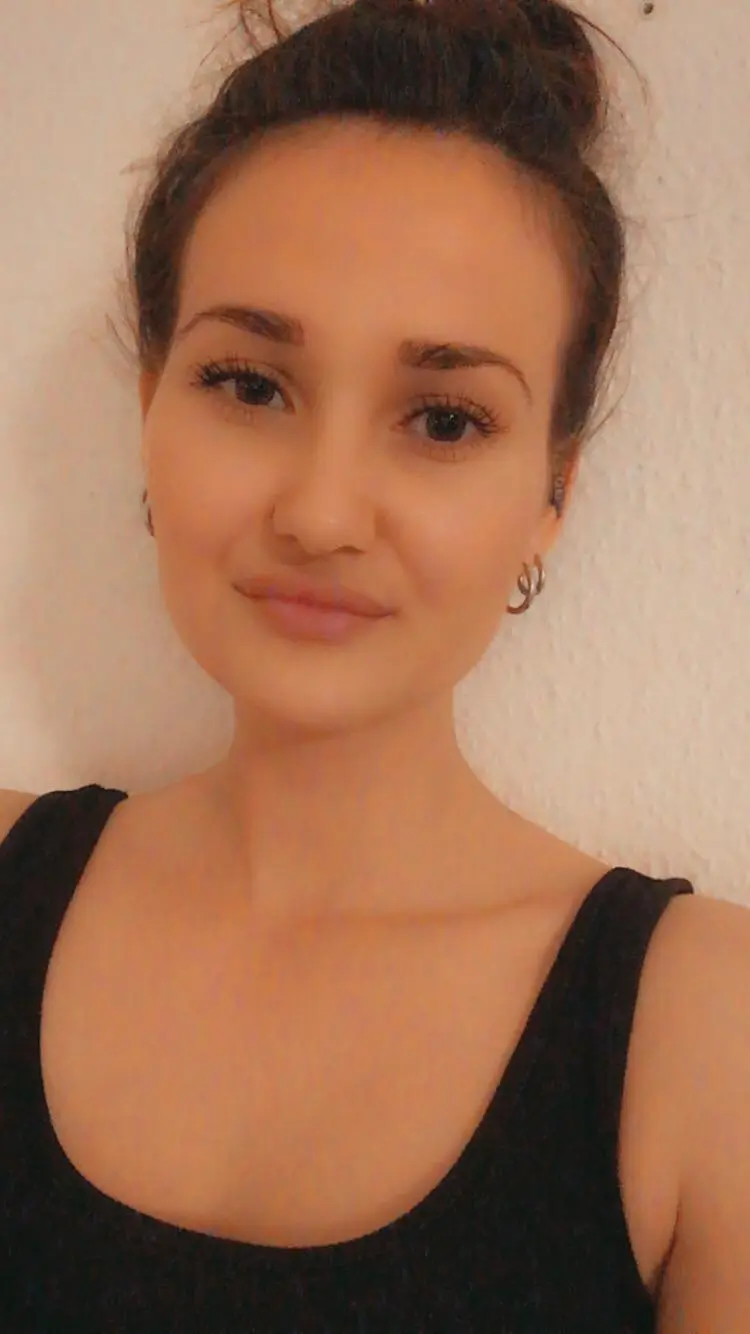Last Updated on March 28, 2024

Feeling the weight of the world pressing down on your shoulders, the incessant racing of your heart, the persistent churn of worry in your stomach — anxiety can wrap its tendrils around every aspect of your life, leaving you feeling suffocated and overwhelmed.
In a world that seems to move faster with each passing day, finding moments of calm can feel like an impossible feat. Yet, amidst the chaos, there lies a sanctuary of natural remedies waiting to be discovered.
In this article, you’ll learn how to reduce anxiety naturally. From ancient practices to modern-day techniques, join me as we explore the pathways to inner peace and reclaim control of our minds, bodies, and souls.
8 best ways to reduce anxiety naturally
There are several natural ways to help relieve anxiety quickly. Here are some techniques you can try:
1. Deep breathing
Deep breathing exercises work by activating the body’s parasympathetic nervous system, which promotes relaxation and is a great natural way to relieve anxiety fast.
When we’re anxious, our breathing tends to become shallow and rapid, which can further exacerbate feelings of anxiety.
Deep breathing involves breathing in slowly and deeply through the nose, allowing the breath to fill the abdomen rather than just the chest, and then exhaling slowly through the mouth.
This technique can help calm the mind and body by increasing oxygen flow and reducing the heart rate.
See also: Breathwork to release trauma
2. Progressive muscle relaxation (PMR)
PMR is a relaxation technique that involves systematically tensing and then relaxing different muscle groups in the body.
By deliberately tensing and releasing muscle tension, you can learn to recognize the physical sensations of stress and relaxation.
This technique helps promote awareness of muscle tension and encourages the body to release built-up tension, leading to a sense of deep relaxation.
Here’s a step-by-step guide on how to practice PMR:
1. Find a quiet space: Choose a quiet and comfortable place where you won’t be disturbed for the duration of the exercise. You can sit in a comfortable chair or lie down on a mat or bed.
2. Get comfortable: Make sure you’re comfortable by loosening any tight clothing and removing distractions such as phones or electronic devices.
3. Deep breathing: Begin by taking a few deep breaths to help relax your body and calm your mind. Inhale deeply through your nose, hold for a few seconds, and then exhale slowly through your mouth.
4. Start with your feet: Focus your attention on your feet. Tense the muscles in your feet by curling your toes downward as much as possible. Hold this tension for about 5-10 seconds while continuing to breathe deeply.
5. Release tension: After holding the tension, slowly and gently release the tension in your feet. Feel the relaxation spreading through your feet as the tension fades away. Focus on the sensation of relaxation for 10-20 seconds.
6. Move up the body: Repeat the process with each muscle group, gradually moving upward through your body. Here’s a suggested order:
- Calves and thighs
- Buttocks
- Abdomen
- Chest and back
- Shoulders
- Arms and hands
- Neck and throat
- Face (including jaw, cheeks, and forehead)
7. Focus on breathing: Throughout the exercise, continue to breathe deeply and evenly. Use your breath to help release tension from each muscle group as you relax.
8. Progressive relaxation: As you move through each muscle group, notice the difference between tension and relaxation. Focus on the contrast between the two sensations, allowing yourself to fully experience the feeling of relaxation.
9. Complete relaxation: Once you’ve gone through all the muscle groups, take a few moments to enjoy the overall feeling of relaxation in your body. You may choose to remain in this relaxed state for a few minutes before slowly returning to your normal activities.
3. Mindfulness meditation
Mindfulness meditation involves paying attention to the present moment without judgment.
It cultivates awareness of thoughts, feelings, bodily sensations, and the surrounding environment.
Through mindfulness meditation, you can observe your thoughts and feelings without getting caught up in them, allowing you to develop a greater sense of calm and acceptance.
Regular practice can also help increase self-awareness, reduce rumination, and improve emotional regulation.
4. Physical activity
Exercise is well-known for its mood-boosting effects. When you engage in physical activity, your body releases endorphins, which are natural chemicals that act as pain relievers and mood elevators.
Exercise also helps reduce levels of the body’s stress hormones, such as cortisol and adrenaline.
Additionally, physical activity can serve as a distraction from anxious thoughts and promote a sense of accomplishment and well-being.
5. Aromatherapy
Aromatherapy involves using essential oils derived from plants to promote physical and psychological well-being.
Certain essential oils, such as lavender, chamomile, and bergamot, have been shown to have calming effects on the nervous system.
Inhalation of these oils through methods like diffusion, inhalation, or topical application can help reduce anxiety, promote relaxation, and improve sleep quality.
6. Limit caffeine and alcohol
Caffeine and alcohol can both exacerbate symptoms of anxiety.
Caffeine is a stimulant that can increase heart rate and contribute to feelings of jitteriness and nervousness.
Similarly, while alcohol may initially have a calming effect, it can disrupt sleep patterns and lead to increased feelings of anxiety and depression, especially with excessive or long-term use.
Limiting or avoiding these substances can help reduce overall anxiety levels.
7. Talk to someone
Sharing your feelings and concerns with a trusted friend, family member, or mental health professional can provide valuable support and perspective.
Simply verbalizing your emotions can often bring a sense of relief and validation.
Additionally, talking to someone can help you gain insight into your thought patterns and develop coping strategies for managing anxiety more effectively.
Therapy or counseling can also provide you with tools and techniques tailored to your individual needs.
8. Yoga
Yoga is a holistic practice that combines physical postures (asanas), breathwork (pranayama), and meditation to promote overall well-being.
The practice of yoga helps integrate the mind, body, and spirit, offering a comprehensive approach to anxiety relief.
Through a combination of gentle stretches, controlled breathing techniques, and mindfulness practices, yoga can help reduce stress and anxiety in many ways!
Incorporating these techniques into your daily routine can help you build resilience to stress and anxiety, leading to improved overall well-being.
Experiment with different approaches to find what works best for you, and remember that consistency and practice are key to reaping the full benefits of natural anxiety relief techniques.
See also: 28 daily habits to improve your mental health
Strongest natural anxiety medication
When it comes to natural remedies for anxiety, there isn’t a single “strongest” medication because individual responses vary. What works effectively for one person may not have the same impact on another.
However, several natural supplements and herbs are commonly used to help alleviate anxiety symptoms. Here are some of the most notable ones:
1. Kava kava
Kava is a plant native to the South Pacific islands and has been traditionally used to promote relaxation and reduce anxiety.
It’s believed to work by enhancing the activity of the neurotransmitter GABA, which has calming effects on the brain.
However, it’s essential to use kava cautiously and under the guidance of a healthcare professional, as excessive or prolonged use has been associated with liver toxicity.
2. Passionflower
Passionflower is a vine native to the Americas and has a long history of use as a natural remedy for anxiety and insomnia.
It’s thought to work by increasing levels of GABA in the brain, similar to benzodiazepine medications.
Passionflower is generally considered safe for short-term use, but long-term safety data is limited.
3. Valerian root
Valerian is a flowering plant native to Europe and Asia, and its root has been used for centuries as a natural sleep aid and anxiety reducer.
Valerian may help increase levels of GABA in the brain, leading to feelings of relaxation and calmness.
However, its effectiveness for anxiety varies among individuals, and it may cause drowsiness in some people.
4. Lavender
Lavender is a fragrant herb known for its calming and soothing properties.
It’s commonly used in aromatherapy to reduce stress and anxiety.
Inhalation of lavender essential oil or use in a diffuser may help promote relaxation and improve mood.
Some studies have shown that lavender may be as effective as prescription anti-anxiety medications for some individuals.
5. Chamomile
Chamomile is a flowering plant that belongs to the daisy family. It has been used for centuries as a natural remedy for anxiety, insomnia, and digestive issues.
Chamomile tea is a popular way to consume chamomile and may help promote relaxation and reduce anxiety symptoms.
Chamomile contains compounds that bind to GABA receptors in the brain, exerting calming effects.
6. L-theanine
L-theanine is an amino acid found naturally in tea leaves, particularly green tea.
It has been studied for its calming effects on the brain and is believed to increase levels of GABA and other neurotransmitters associated with relaxation.
L-theanine supplements may help reduce anxiety and promote feelings of calmness without causing drowsiness.
It’s important to note that while these natural remedies may help alleviate anxiety symptoms for some individuals, they may not be suitable for everyone.
It’s crucial to consult with a healthcare professional before starting any new supplement, especially if you’re taking medications or have underlying health conditions.
Additionally, natural remedies should be used as part of a comprehensive approach to managing anxiety, which may include lifestyle modifications, therapy, and other forms of support.
If you enjoyed this article on how to reduce anxiety naturally, I would be grateful if you shared it on Twitter, Facebook, or Pinterest! Thank you❤️
See also:
- 5 TED talks on anxiety
- 30 journal prompts for anxiety and overthinking
- 25 positive affirmations for anxiety relief
📌 PIN THIS POST FOR LATER


Hello, my name is Sara and I am the founder of Spiritvibez, I’m here to guide you on your spiritual journey toward healing, growth, and self-discovery. I believe that true transformation occurs when the mind, body, and spirit are aligned and working in harmony. Through Spiritvibez, I hope to inspire and empower you to deepen your spiritual practice, embrace your authentic self, and begin living your best life.
